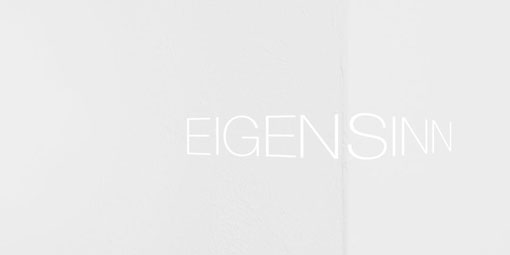
Generally, Künstlerhaus Dortmund is organizing thematic group shows. A given subject or a frame of form, medium or content comprises different works to reveal overarching commonalities. The focus is on the staged dialogue between the individual works which invites us to compare the single positions to reach a seemingly better understanding in the mutual context. However, this concept is questionable in as far as the autonomous impact of individual works is relativized. The different artistic contributions have in fact been created independently and freely. They have not been developed for such a juxtapostion, or based on a given subject. The attempt of a sensible classification into a joining exhibition concept may thus block the view onto the individuality of each work. "Eigensinn" is explicitly focusing on the autonomy of the different artistic aims and working techniques instead. The works rely on their own rules. It is aimed to facilitate an involvement with the intentions of the artists and their works through a direct and separate encounter.


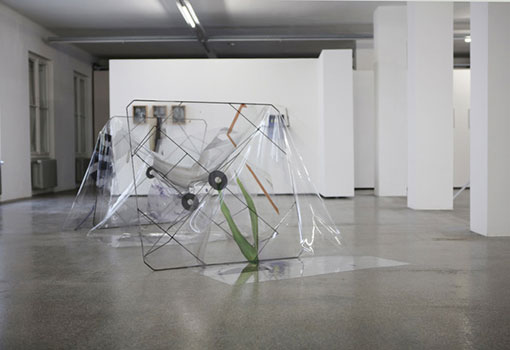
In her work Eva Chytilek reflects on her own process of creating and the interaction of her body with the worldly objects to give an insight into an autonomous, inmer logic of her approach to idea and form.
Similiarities are never considered as preexisting but taken as an instrument for the creation of a formal vocabulary which draws on the coordinates of space, the potentialities of the body and the media conditions alike. Among the most striking changes of our time is the increasing disappearance of the body, whose physical presence appears to have ceased to be an indispensable prerequistite for work processes and information exchange. Fragile object states evolve from fixed scenarios with all their object-related attributes and act as if something has been halted ofr a moment, within its tmutation. In this state the objects evoke their potential of being different.
www.evachytilek.com
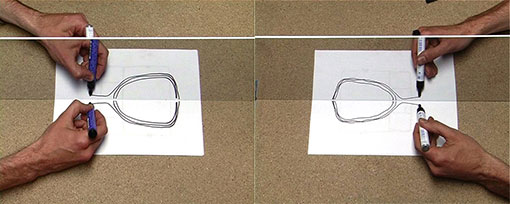
The artists’ hands draw all mirrors owned by the artist simultaneously. The view is divided into two cameras: one screen presents the left, the other the right. A mirror is positioned vertically in the middle of the sheet, and hides both the view of a large portion of the neighbouring hand, as well as the half of the paper under it. In the middle of the image the mirror produces absolute symmetry. The displacement of the left and right hands is shifted to the (not hidden) edges of the recording, above the white edges of the mirror, where it appears as a transmission error on the monitor. The results on the two screens are noticeably different, and encourage the viewer to constantly compare them.
www.peterdobroschke.de
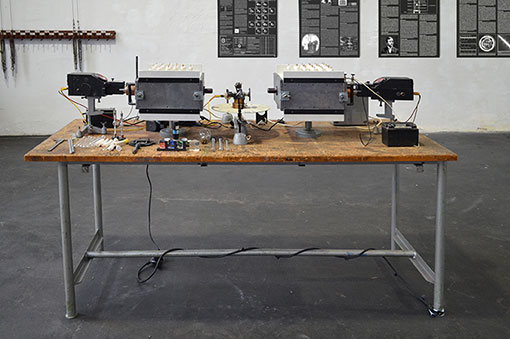
The "Relational Field Research" began for Erich Füllgrabe in 1962. Starting from painting and collage, he extended his research field to the investigation of the interactions between visual perception and verbal understanding. Since the late 90s of the last century he has been working in the field of artistic zero research and develops installations, representations, reconstructions and models of measuring equipment. In them, artistic language and scientific language are interlinked and unexpected definitions are formulated for both understanding oft art and science in order to discuss the possibilities of another approach to reality.
www.gmdf.de
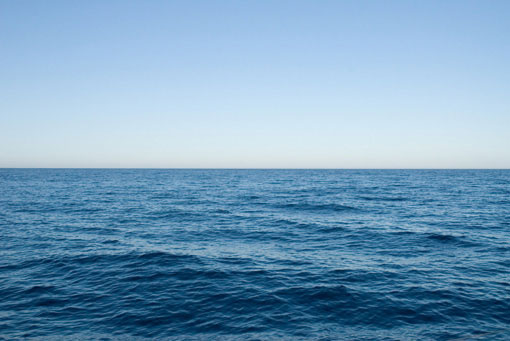
Coming from photography, Paul Hempt has developed an increasingly associative, object-related approach which has so far been expressed in extensive site-specific installations. These in part technically elaborate installations and devices hint at the tiny, delicate yet essential modules of the world that surrounds us. There is a coexistence of ascination and doubt in Hempt's work - he questions our immediate and apparently ultimately fathomed environment with a wonder. While being increasingly deprived of their spatial limits, Hempt's installations borrow from signposts and landmarks and eventually become vertices and benchmarks of human civilization in open nature.
He studied at Fachhochschule Salzburg and at Kunstakademie where he graduated with honors under Prof. Andreas Gursky in February 2017. (E. Friedrich)
www.hempt.at
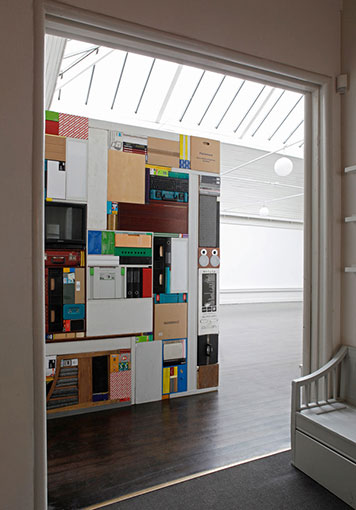
Michael Johansson deals with ordinary objects we all recognize, but in a way far from the ordinary. Driven by the agenda to densify the world, objects are morphed into precisely stacked rectangular shapes, connected to a certain place, where their original purpose are transformed into catalysts of new meanings.
Outdated items within the same colour range are reconstructed into a homogeneous image of a fictional life reinforced by our collective imaginary: the compressed scenery from a time gone by. Or the excessively well packed storage space where each object appears to be an immutable part of a solid whole. The newfound rigid order separates the objects from their usage, and invites us to a shared space where the familiar meets the unfamiliar.
www.michaeljohansson.com
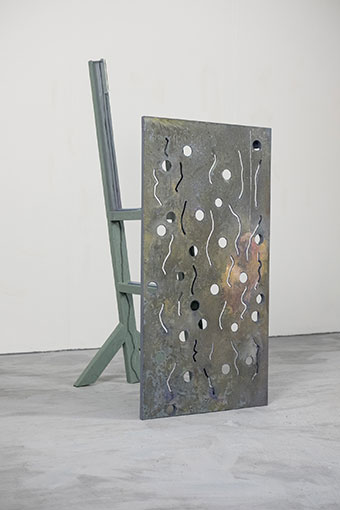
(…) Charlotte Mumm’s oeuvre evolved from painting, which is why especially the pictorial aspects of her work allow for many different interpretive approaches. Her inventions frequently oscillate between figuration and abstraction. Representational images flare up here and there, like quick, spontaneous ideas, like fragments of thoughts or stories. Often motifs or image pairs merge in entire series, however, without resulting in consistent storylines. They are more like emblematic objects, gestures, or faces, sometimes also words. Although her representational forms appear to be derived from something external which exists and is recognizable or conceivable, these appropriations are also always transformations. She systematically sounds out the interspaces between material, form, and representation and questions the relationship between conceptual statement and associative perception. All her readable motifs are tightly interwoven with abstract structures, colour gradients, or traces in which the material itself is liable to develop a life of its own. At the same time, the emotional and immediate manual treatment of the material is confronted with
the aloof rationality of signs or pictograms. (…)
(Thomas Niemeyer, director of the Städtische Galerie Nordhorn)
www.charlottemumm.com
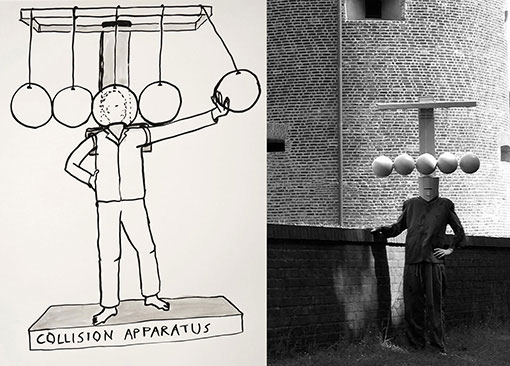
Significant for the work of Julia Oschatz is a figure with peculiar masks, made from different materials like cardboard, wood or plastic, which hides the head and in the same time extends it. As the only actor in the drawings, paintings or videos, the figure performs with these head extensions, slapstick like actions, which speak about the tragicomic development and failure of human troubles. Through the usage of the different heads object and subject, character and inventor and vision and reality start to communicate.
www.juliaoschatz.com